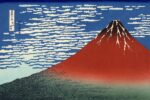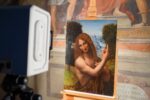Giulia Cenci – La terra bassa
.jpg)
Giulia Cenci concepisce un nucleo di sculture in cui l’altezza definisce il limite installativo della mostra, la quale cerca di apparire come un panorama basso, in cui tutto sembra non aver avuto lo spazio di svilupparsi, se non per pochi centimetri sopra terra.
Comunicato stampa
SpazioA ha il piacere di presentare, sabato 20 settembre, 2014, alle ore 18, La terra bassa, prima mostra personale di Giulia Cenci nello spazio di via Amati 13, Pistoia, dopo l'installazione site-specific nel project space della galleria nel 2013.
Giulia Cenci concepisce un nucleo di sculture in cui l'altezza definisce il limite installativo della mostra, la quale cerca di apparire come un panorama basso, in cui tutto sembra non aver avuto lo spazio di svilupparsi, se non per pochi centimetri sopra terra.
La mostra appare come una veduta bloccata, schiacciata, "già consumata". Un'emersione composta da oggetti e residui di altrettanto bassa rilevanza. In ognuno di questi la superficie viene indagata come un luogo capace di registrare la presenza del tatto e del gesto scultoreo, i quali sono cristallizzati nella freddezza dei materiali plastici che duramente cedono alla malleabilità. Le diversità delle superfici diventano quasi un attestazione di presenza, la volontà di rivendicare un'azione (volontaria -nel caso scultoreo- o involontaria) che prima o poi modifica l'aspetto delle cose, così come di noi stessi.
I lavori presenti mostrano delle duplicità: l'appartenenza a forme e disegni conosciuti e ripetuti nel nostro presente così come una dichiarata manualità la quale li ha scavati, modellati, ridotti all'osso o pietrificati. Ma entrambe queste caratteristiche si combattono all'interno dei singoli oggetti, divenendo qualità incomplete e mal riuscite, trasformando gli oggetti in contenitori ibridi il cui posto non è garantito se non nei pochi centimetri di mostra rimasta, nello scarto tra lì e il suolo.
“…il vasaio Butade Sicionio scoprì per primo l’arte di modellare i ritratti in argilla; ciò avveniva a Corinto ed egli dovette la sua invenzione a sua figlia, innamorata di un giovane.
Poiché quest’ultimo doveva partire per l’estero, essa tratteggiò con una linea l’ombra del suo volto proiettata sul muro dal lume di una lanterna; su quelle linee il padre impresse l’argilla riproducendone il volto; fattolo seccare con il resto del suo vasellame lo mise a cuocere in forno”.
Plinio il Vecchio (Naturalis Historia, XXXV, 15 e 151)
“Un paese di bambola, non le pare? Non s’è risparmiato sul pittoresco! Ma non l’ho portata in quest’isola per il pittoresco, caro amico. Tutti possono farle ammirare delle cuffie, degli zoccoli, case dipinte dove i pescatori fumano tabacco fine in mezzo all’odor di trementina. Io sono invece uno dei pochi che possa farle vedere quel che c’è d’importante. Eccoci alla diga. Dobbiamo seguirla per essere quanto più lontano possibile da quelle case troppo graziose. Sediamo, la prego. Che ne dice? Fra i paesaggi negativi, è il più bello! Guardi a sinistra quel mucchio di ceneri che qui chiamano duna, la diga grigia a destra, ai nostri piedi la spiaggia livida e davanti il mare color lisciva chiaro, il vasto cielo dove si riflettono le pallide acque. Un inferno soffice. Solo linee orizzontali, non una tinta forte, lo spazio è senza colore, la vita morta. Non è il disgregarsi universale, il nulla reso sensibile alla vista? Niente uomini, soprattutto, niente uomini. Lei ed io soltanto, davanti al pianeta finalmente deserto!”
A. Camus, La Caduta
"Il corpo è come un vaso o come un ricettacolo dell'anima."
(corpus quidem quasi vas est aut aliquod animi receptaculum). (t, 52-53)
Cicerone, Tusculana
Giulia Cenci è nata a Cortona nel 1988 ed ha studiato all’Accademia di Belle Arti di Bologna. Attualmente sta frequentando un Master in Fine Art alla St.Joost Academy, Den Bosch-Breda, NL.
Tra le mostre collettive e personali a cui ha partecipato recentemente: If you want me again look for me under your boot-sole, Present future a cura di Qinyi Lim, Artissima, Torino IT (2013); Default, a cura di Antonio Grulli, Gaff, Milano IT (2013); Halfground, SpazioA project space, Pistoia IT (2013); Xohouille, a cura di Emmanuel Lambion, w-o-l-k-e, Brussels B (2013); Still Light, a cura di Taru Elfving, HIAP, Suomenlinna, Helsinki, FIN (2013); Differenti Attitudini, a cura di Roberto Daolio, Vero Stoppioni Museum, Santa Sofia, Forlì (2012); Corso Aperto, XVIII mostra di fine Corso Superiore di Arti Visive, Visiting Professor Liliana Moro, a cura di Andrea Lissoni, Fondazione Antonio Ratti, Como (2012).
Vive e lavora tra Cortona IT e Den Bosch, NL.
Giulia Cenci
La terra bassa
OPENING: SEPTEMBER 20, 2014 - 6 PM
TUE - SAT 11AM - 2PM / 3PM - 7PM or by appointment
Press Release
On Saturday, September 20, 2014, at 6 pm, SpazioA is proud to present La terra bassa - the first personal show of Giulia Cenci - in the main gallery in Via Amati 13, Pistoia, after the site-specific installation at the project space in 2013.
Giulia Cenci provides a complex of sculptures whose height defines the limits of installation of the show, which therefore resembles a low panorama in which everything appears to have been denied the space required to develop beyond a few mere centimeters above the ground.
The show assumes the appearance of an obstructed, crushed, “already consummated" view, an emersion composed of objects and residue of equally low relevance. The surface of each one demands our inspection as areas capable of recording the sculptor’s touch and gesture crystallized in the frigidity of plastic materials that fiercely resist malleability. The diversity of the surfaces nearly becomes an acknowledgment of presence and of the intention to affirm an action (voluntary, when performed by the sculptor - or involuntary, as elsewhere) that sooner or later modifies the aspect of things and even ourselves as well.
The works present an element of duplicity: belonging to forms and designs well-known and repeated in our present day along with the evident manual workmanship that scourged them, modeled them, stripped them to the bone or petrified them. Both these characteristics struggle to emerge inside the single objects, which become incomplete, imperfect qualities, transforming the objects into hybrid containers whose place cannot be guaranteed but in the very few centimeters of display space left and in the leftover gap between that place and the ground.
“…The ceramicist Butade Sicionio was the first to develop the art of modeling portraits in clay. He made this discovery in Corinth and owed his invention to his daughter, who was in love with a young man.
Because the young man had to go abroad, Sicionio traced the shadow of the man’s face outlined against a wall by lamplight. The ceramicist molded clay along the lines of shadow he had traced and copied the face before firing it in the kiln together with the rest of the day’s vases”.
Pliny the Elder (Naturalis Historia, XXXV, 15 e 151)
“A village of dolls and dollhouses, wouldn’t you say? They certainly didn’t hold back on making it picturesque! But I didn’t bring you to this island merely for the picturesque, my dear friend. Anyone can admire the overturned hulls of the boats, wooden clogs, painted houses where fisherman smoke fine tobacco surrounded by the smell of turpentine. I’m one of the only ones who can show you what’s important. Here we are at the dam. We have to follow it in order to get as far away as we can from those overly charming houses. Have a seat, please. What do you say? Among all the negative landscapes, this is the nicest! Look at that pile of cinders on the left they call as dune, the gray dam to our right, the bluish beach at our feet, the sea the color of pale lye in front of us, and the vast sky reflected in the pallid waters. A soft type of hell. Only horizontal lines, not one bright color; space is colorless, life is dead. Isn’t this the universal falling apart? Nothingness finally made visible? And no people, above all, no people. Just you and I, in front of the planet that has finally been deserted at last!”
A. Camus, The Fall
"The body is like a jar or a recipient for the soul."
(corpus quidem quasi vas est aut aliquod animi receptaculum). (t, 52-53)
Cicero, Tusculanae
Giulia Cenci was born in Cortona in 1988. He graduated at the Academy of Fine Arts in Bologna. She's currently attending a Master of Fine Arts at St.Joost Academy, Den Bosch-Breda, NL.
Recent solo and group exhibitions are: If you want me again look for me under your boot-sole, Present future curated by Qinyi Lim, Artissima, Torino IT (2013); Default, curated by Antonio Grulli, Gaff, Milano IT (2013); Halfground, SpazioA project space, Pistoia IT (2013); Xohouille, curated by Emmanuel Lambion, w-o-l-k-e, Brussels B (2013); Still Light, curated by Taru Elfving HIAP, Suomenlinna, Helsinki, FIN (2013); Differenti Attitudini, curated by Roberto Daolio, Vero Stoppioni Museum, Santa Sofia, Forlì (2012); Corso Aperto, XVIII mostra di fine Corso Superiore di Arti Visive, Visiting Professor Liliana Moro, curated by Andrea Lissoni, Fondazione Antonio Ratti, Como (2012).
Works and lives between Cortona IT and Den Bosch, NL.



